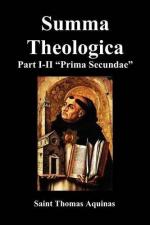The outer tabernacle, which denotes this present world, also contained three things, viz. the “altar of incense,” which was directly opposite the ark; the “table of proposition,” with the twelve loaves of proposition on it, which stood on the northern side; and the “candlestick,” which was placed towards the south. These three things seem to correspond to the three which were enclosed in the ark; and they represented the same things as the latter, but more clearly: because, in order that wise men, denoted by the priests entering the temple, might grasp the meaning of these types, it was necessary to express them more manifestly than they are in the Divine or angelic mind. Accordingly the candlestick betokened, as a sensible sign thereof, the wisdom which was expressed on the tables (of the Law) in intelligible words. The altar of incense signified the office of the priest, whose duty it was to bring the people to God: and this was signified also by the rod: because on that altar the sweet-smelling incense was burnt, signifying the holiness of the people acceptable to God: for it is written (Apoc. 8:3) that the smoke of the sweet-smelling spices signifies the “justifications of the saints” (cf. Apoc. 19:8). Moreover it was fitting that the dignity of the priesthood should be denoted, in the ark, by the rod, and, in the outer tabernacle, by the altar of incense: because the priest is the mediator between God and the people, governing the people by Divine power, denoted by the rod; and offering to God the fruit of His government, i.e. the holiness of the people, on the altar of incense, so to speak. The table signified the sustenance of life, just as the manna did: but the former, a more general and a coarser kind of nourishment; the latter, a sweeter and more delicate. Again, the candlestick was fittingly placed on the southern side, while the table was placed to the north: because the south is the right-hand side of the world, while the north is the left-hand side, as stated in De Coelo et Mundo ii; and wisdom, like other spiritual goods, belongs to the right hand, while temporal nourishment belongs on the left, according to Prov. 3:16: “In her left hand (are) riches and glory.” And the priestly power is midway between temporal goods and spiritual wisdom; because thereby both spiritual wisdom and temporal goods are dispensed.
Another literal signification may be assigned. For the ark contained the tables of the Law, in order to prevent forgetfulness of the Law, wherefore it is written (Ex. 24:12): “I will give thee two tables of stone, and the Law, and the commandments which I have written: that thou mayest teach them” to the children of Israel. The rod of Aaron was placed there to restrain the people from insubordination to the priesthood of Aaron; wherefore it is written (Num. 17:10): “Carry back the rod of Aaron into the tabernacle of the testimony, that it may be kept there for a token of the rebellious




